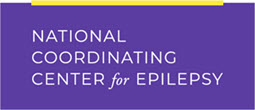Living with epilepsy is more than just knowing the type of seizures you have or which medicine to take. Children and youth with epilepsy (CYE) and parents/caregivers need to learn how to manage and respond to seizures in many situations. Epilepsy is best managed through preparation, treatment and teamwork. An accurate epilepsy diagnosis and an appropriate treatment plan are necessary for successful epilepsy management. The goal of epilepsy management is to control/reduce seizures without producing unwanted medication side effects.
Self-management of Seizures
Learning the skills to self-manage their epilepsy allows CYE to live full and satisfying lives. Health care professionals’ support of patient self-management is a key component of effective care. The CDC’s Managing Epilepsy Well Checklist describes self-management strategies and can be printed for CYE and families to use at home. Key factors in managing seizures include:
- Tracking seizures
- For CYE, a mobile seizure diary can be used as a self-management tool to help individuals record, track and manage their seizures and epilepsy.
- Mobile apps can also help CYE maintain their medical history and medication list and track their symptoms, side effects, and moods. CYE and parents/caregivers can be sent prescription and medical appointment reminders.
- Managing triggers
- Seizures may occur in a pattern or are more likely to occur in certain situations or under certain conditions. Not all people with epilepsy have seizure triggers, and for those that do, triggers might be different from person to person.
- For those that do have seizure triggers, some seizure triggers include missed medications, sleep deprivation, stress, alcohol, drug abuse, menstrual cycle, nutritional factors, over-the-counter medicines and flashing lights.
- Responding to seizure emergencies
- CYE should have a seizure action plan for emergency situations that lets caregivers at home or at school know when to give seizure rescue medications or call for emergency medical treatment.
For additional information on epilepsy self-management, visit the Epilepsy Foundation.
Seizure Action Plans
Long seizures or clusters of seizures can be a medical emergency and being prepared for them can lead to better health outcomes. A plan can help inform others about what to do in emergency situations. A Seizure Action Plan (SAP) contains the necessary information school staff, family members, babysitters and other people in a child or youth’s life may need to know to assist them when they have a seizure. It includes information on seizure first aid, parent and health care provider contact information, seizure type(s) and medications specific to that child including when and how to give seizure rescue medications. A Seizure Action Plan is an important tool that help parents, schools and physicians partner to keep children safe and healthy. For more information, visit Supporting Children and Youth with Epilepsy at School.
Seizure First Aid
Knowing how to help someone during a seizure can potentially save their life. During seizure first aid training, participants learn about epilepsy, how to recognize the signs of a seizure, how to use basic seizure first aid steps and when emergency medical help is needed. Visit the Epilepsy Foundation for more information on seizure first aid and to become seizure first aid certified. Additional information can also be found on the CDC website.
Seizure Safety
Keeping children and youth with epilepsy safe while still allowing them to participate in many of the typical activities of childhood is vital. Visit healthychildren.org to get seizure safety tips for parents regarding safety proofing the home and recreational activities such as sports and swimming.
- Wearing a medical alert bracelet or necklace.
- Setting the maximum hot water temperature in your house to 110 degrees Fahrenheit or less to prevent burns.
- Avoiding heights without appropriate protection such as a safety harness and helmet.
- Making sure a child is never left unsupervised in water such as the bathtub, pool, lake, etc.
- Wearing protective clothing (elbow or knee pads, helmet, goggles) during sports.
Families and Schools as Partners in Epilepsy Management
Education for family members, teachers, and caregivers to recognize seizures and to intervene appropriately when needed is critical. CYE should have:
- A seizure action plan at school, which should be updated annually.
- Mental health/school social services for CYE and their siblings.
- School social services that can address and help manage comorbidities such as ADHD, depression and anxiety.
Family-centered care assures the health and well-being of children and their families through a respectful family-professional partnership which honors the strengths, cultures, traditions and expertise that each person brings to the relationship.
Impact of Epilepsy on Families
The challenges of pediatric epilepsy extend beyond the CYE and can affect the whole family. Some siblings of children with epilepsy have been shown to demonstrate negative feelings towards epilepsy, anxiety or fear about seizures and a feeling of responsibility towards their affected sibling. However, a 2016 survey showed that siblings are more likely to feel protective rather than aggrieved. towards their sibling. Mothers of CYE have also reported higher rates of stress, particularly among children with new-onset epilepsy. Let your child’s healthcare provider know about how your child’s epilepsy diagnosis is affecting the whole family as they can provide additional resources. Visit the Epilepsy Foundation for additional resources, including support groups.
Additional Resources
For more details, check out these helpful resources:
Last Updated
06/21/2022
Source
American Academy of Pediatrics
